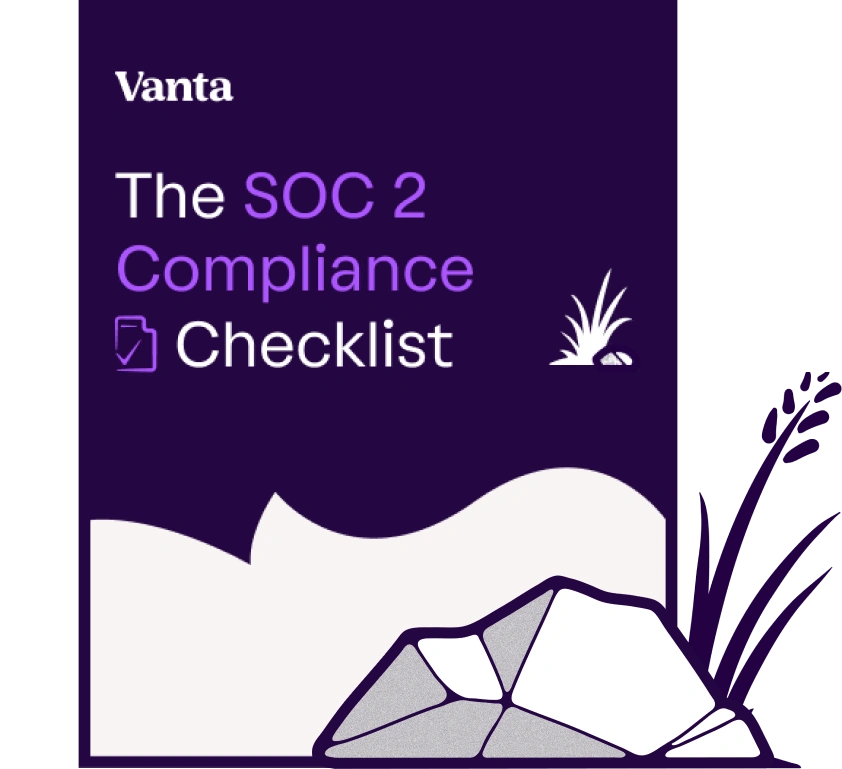Share this article

5 ways to turn SOC 2 compliance into a growth strategy
Accelerating security solutions for small businesses Tagore offers strategic services to small businesses. | A partnership that can scale Tagore prioritized finding a managed compliance partner with an established product, dedicated support team, and rapid release rate. | Standing out from competitors Tagore's partnership with Vanta enhances its strategic focus and deepens client value, creating differentiation in a competitive market. |
Your company may be considering getting its SOC 2 as a way to prove your security and compliance practices to potential customers — or maybe, you already have your SOC 2 and are not sure what do next. At Vanta, we encourage our customers to treat their SOC 2 compliance as a key element to their sales and marketing strategy. In this post we’ll explore the top five ways to turn this achievement into a growth strategy.
1. Fold your company’s SOC 2 compliance into your sales pitch. A SOC 2 provides a standardized framework to prove your company’s strong security posture, and can often be a competitive differentiator. Find opportunities for your sales team to share your SOC 2 status with prospects in initial qualification calls or in other sales collateral that your team uses early in your sales process.
2. Share your SOC 2 as you learn that a security review is required. Perhaps you got your SOC 2 to close a particular deal with a key client; now you can make the most of that investment by leveraging it in other sales conversations as well. Providing a SOC 2 often negates the need for lengthy and time-intensive security questionnaires, helping you close the deal sooner and proactively demonstrating your commitment to security.
3. Announce your SOC 2 on your blog and social media. Achieving a security certification is a major milestone for your company — take a moment to share your SOC 2 story with your prospects and your network on social media, in a blog post, and via your PR team if you have one.
4. Add a SOC 2 badge to your website. Your SOC 2 certification is an investment in security that your prospects will want to know about. Make sure your SOC 2 compliance has a strong presence on your website: show it off and share the news with SOC 2 badges from the AICPA and Vanta.
5. Add a Security Status page to your website. A public trust center makes it easy to demonstrate the current state of your security program and provide secure access to compliance information - so you know who's requesting access to your SOC 2 report and can automate NDA processing. Vanta customers get one year of SafeBase for free.
Bonus: Apply time saved with SOC 2 back into your business.
- Getting a SOC 2 can help preserve your engineering team’s time — ensuring that they’ll spend fewer hours participating in the security review stage of the sales cycle, and more time focused on your company’s goals.
- Sending your SOC 2 report early can increase the velocity of deal cycles and gives you a good chance of heading off time-consuming vendor questionnaires
- You’re likely to find that going through a SOC 2 audit can help your company build in forward-looking processes that streamline your security and compliance operations — saving time for your whole team and improving your overall security posture.
Want to learn more about how a SOC 2 can help your company close larger customers in less time? Request a demo or reach out to sales@vanta.com.





FEATURED VANTA RESOURCE
The ultimate guide to scaling your compliance program
Learn how to scale, manage, and optimize alongside your business goals.

















.png)
.png)
.png)
.png)


.png)

.png)



.svg)
.svg)
.png)
.png)
.png)